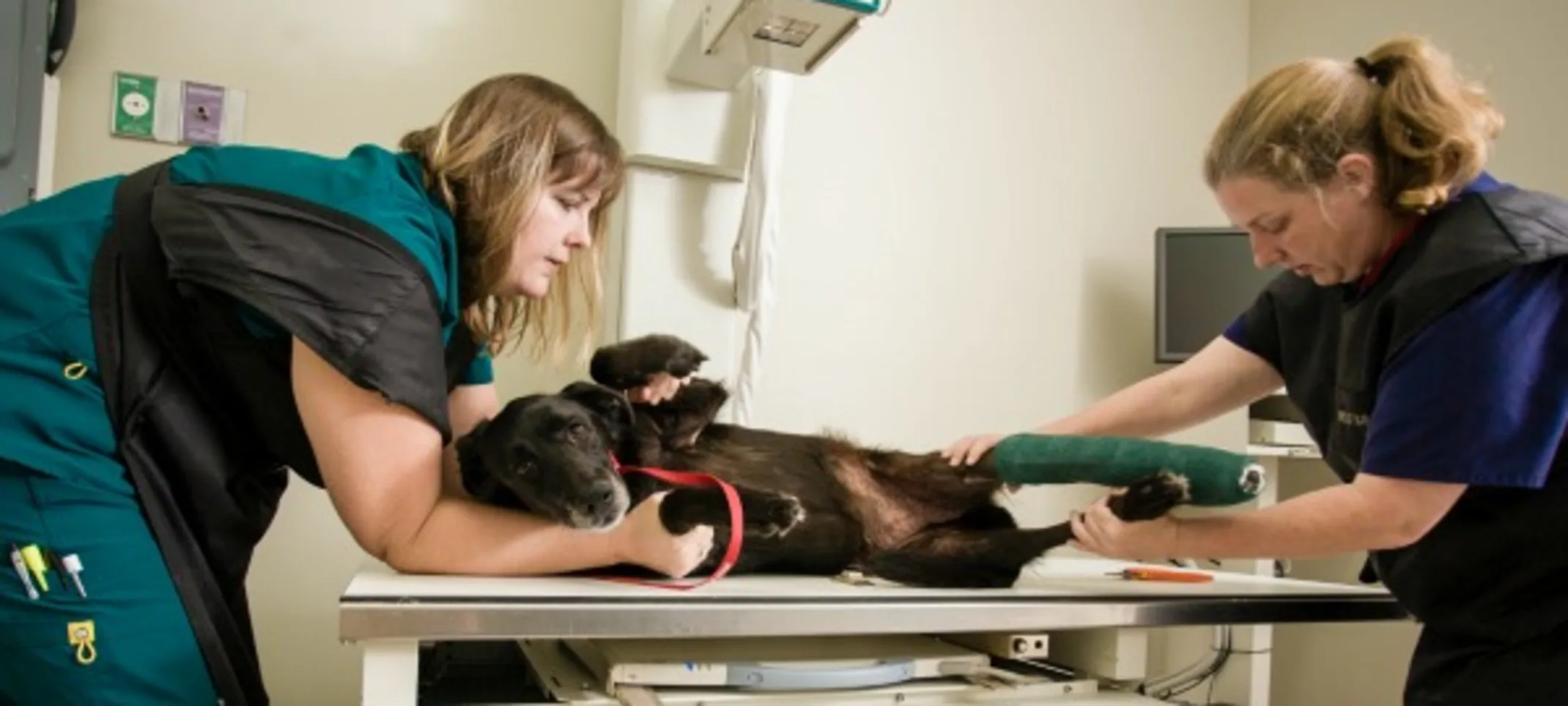Animal Specialty & Emergency Center of Brevard
Joint Surgery
Our board-certified veterinary surgeon leads the ASECB surgical team in emergency and elective surgical procedures such as joint surgery.

Our surgical specialist offers the skilled expertise, while our hospital and highly trained staff are equipped with the tools needed to assist in any surgical procedure.
Our Veterinary Surgical Services Include:
CARPUS (wrist)
COXOFEMORAL JOINT (hip)
CUBITAL JOINT (elbow)
Dislocations and other Joint Surgery
GLENOHUMERAL JOINT (shoulder)
HOCK/TARSUS (ankle)
STIFLE (knee)
Cranial Cruciate Rupture (often referred to by human terminology as a torn “ACL”) can be surgically treated in any size pet.
Tibial Plateau Leveling Osteotomy (TPLO) – usually gives the pet a swift recovery and excellent long-term function
Extra-capsular Suture – many pets, especially the smaller ones, can achieve good long-term function
Patellar Luxation (dislocating kneecaps)
Additional information – Hip Dysplasia
Canine Hip Dysplasia (CHD) is a hereditary disease that is caused by a combination of genetic and environmental factors. CHD can lead to deformity of the hip joint, painful arthritis of the joints, and possible crippling of the dog.
There are dietary, medical, and surgical preventive treatments to minimize the severity of your pet’s arthritis. Breeds at high risk for CHD (German Shepherd, Labrador and Golden Retrievers, etc.) should be examined by a surgeon at an early age (3-4 months old).
The following are two commonly used surgical preventative treatments:
The Juvenile Pubic Symphysiodesis (JPS) involves a single incision over the pubic bone and cautery of the pubic symphysis. This closes that particular growth plate only, which increases the coverage of each hip joint and decreases the severity of CHD-related arthritis by approximately 67%. It can be done at the same time as spay or neuter. Because it depends on growth to accomplish its goal, the benefit is progressively less in pets over 4 months (16 weeks) of age, and there is no benefit after 6 months (24 weeks).
The Triple Pelvic Osteotomy (TPO) accomplishes the same goal as the JPS, but is done in dogs over six months of age and requires three cuts in the pelvic bone, then realignment of the pelvis and repair with plates and screws. A TPO must be done on each side to provide full benefit.
For an adult dog with arthritis, there are medical and surgical options:
Medications involve NSAIDs (non-steroidal anti-inflammatory drugs) such as Previcox (similar to Celebrex but designed for pets); and dietary supplements such as Dasuquin (veterinary tested and contains highly beneficial products such as glucosamine, chondroitin sulfate, and MSM (methylsulfonylmethane).
Total Hip Replacement creates a prosthetic hip to maximize function.
Femoral Head Ostectomy (FHO) removes the painful portion of the hip and allows good function in many pets.
Total hip replacement cases would be referred to the University of Florida.
